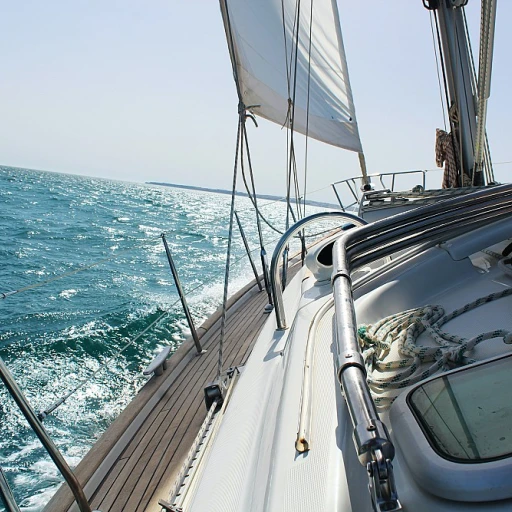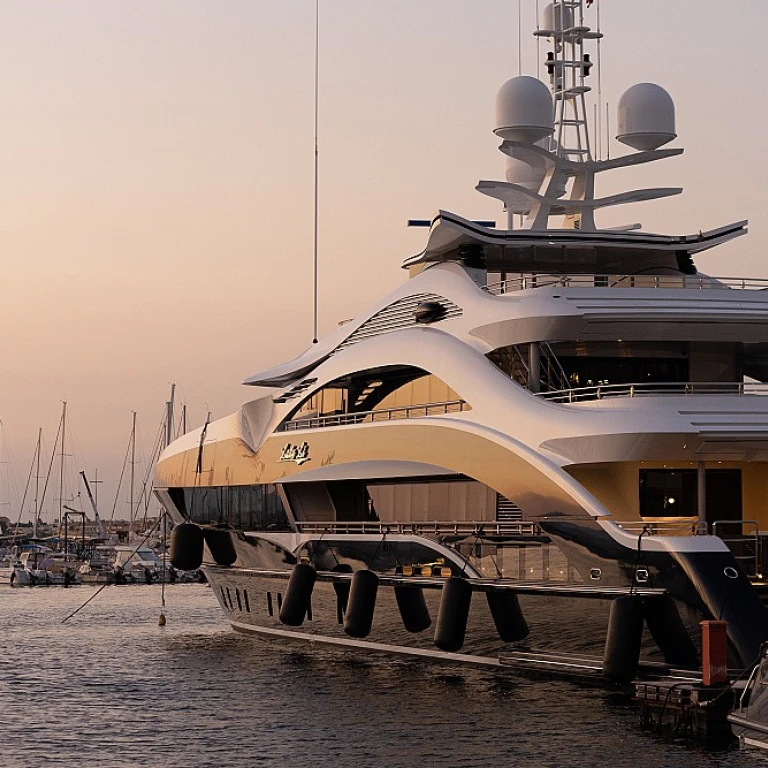The Importance of Cutlass Bearings
The Crucial Component beneath Your Feet
When it comes to maintaining the longevity and performance of a marine boat, the cutlass bearing is a pivotal component that ensures the efficient and smooth operation of the propeller shaft. Known by many names such as rubber bearing or cutless bearings, these water-lubricated parts play an essential role in stabilizing and aligning the shaft within the strut of the boat.
Bearings are indispensable in minimizing friction between the propeller shaft and its surrounding housing, usually made of durable, corrosion-resistant materials like naval brass or composite polymers. Their primary task is to provide support to the rotating shaft while ensuring the reduction of wear within the machinery, thereby prolonging the life of the equipment found in your cherished yacht.
Furthermore, the cutlass bearing serves as a safeguard for the shaft by keeping it properly aligned, even as it endures the boat engines’ vibrations and the constant push-and-pull motion of water. By ensuring that the propeller shaft is carefully held in place, these bearings maintain the propeller’s functioning and prevent unnecessary damage or loss of speed.
For yacht owners keen on securing their investment, understanding the importance of cutlass bearings is paramount. An effectively maintained bearing can prevent costly repairs down the line, ensuring that your marine adventures remain seamless and enthralling. Moreover, awareness of the potential signs of wear and tear can lead to timely interventions, thereby safeguarding your investment in the vessel. To further shield your prized yacht’s propulsion system, the importance of robust outboard motor locks cannot be overstated.
Securing your investment is vital for all yacht enthusiasts.
Types of Cutlass Bearings
Varieties of Cutlass Bearings for Your Yacht
Selecting the appropriate type of cutlass bearing is crucial for your yacht's shaft and propeller performance. The market offers a variety of options tailored for different needs. Below we delve into some common types to help your selection process.
- Rubber Bearings: A popular choice, these bearings typically feature a rubber lining that provides excellent cushioning and reduces vibrations. The rubber, often made of nitrile, ensures durability and flexibility, adapting well to the marine environment.
- Brass Bearings: Known for their strength, these bearings are made from materials like naval and bearing brass. Their robust nature makes them ideal for high-stress applications, offering great longevity and resistance against corrosion in saltwater.
- Composite Bearings: These are often favoured in applications demanding light-weight options. While not as common as rubber or brass, they offer an effective alternative with low maintenance needs.
- Specific Brands: Companies like Duramax Marine and Johnson Cutless provide innovative options like water lubricated designs, which use water as a natural lubricant, minimizing friction and wear.
Choosing the right type of bearing involves considering factors like the shaft length and the specific conditions your yacht faces. A well-matched bearing ensures smooth sailing and reduces maintenance burdens, allowing focus on other crucial components like
boat bellows and overall yacht maintenance.
Installation Tips for Cutlass Bearings
Mastering the Art of Installation for Optimal Performance
Ensuring the correct installation of cutlass bearings, which often feature rubber lining and are fitted around the shaft, is crucial to maintaining the longevity and efficiency of your yacht's propulsion system. A proper installation process influences the boat performance significantly, including propeller shaft movement and alignment. To start, always measure the shaft and strut precisely to match the bearing length, as this will prevent any unnecessary friction or wear.
When it comes to choosing materials, options like bearing brass and naval brass can be beneficial due to their durability in marine environments. Meanwhile, rubber bearings like nitrile rubber and products from brands such as Duramax Marine provide excellent water-lubricated solutions, essential for reducing heat and extending the life of the bearing.
During installation, it's important to check that the bearing fits snugly without any gaps that could lead to shaft movement or vibrations. Using a press or a suitable tool can ensure it slides in correctly, benefiting the overall propulsion system as it reduces the risk of bearing failure during operation. For yachters aiming for cutting-edge performance,
enhancing yacht performance with winged keels can also be quite impactful.
Regularly ensuring that products like Johnson Cutless bearings and Vetus models are securely in place, provides peace of mind and optimal performance. Proper installation is not just a step; it is an integral part of the maintenance regimen that ensures every voyage is smooth and efficient.
Signs of Wear and Tear
Indicators of Deterring Cutlass Bearings
Monitoring the condition of your cutlass bearings is crucial for ensuring the smooth operation of your yacht. Recognizing early signs of wear and tear can prevent further damage and save significant repair costs.
- Unusual Vibrations: If you notice unusual vibrations emanating from the shaft or propeller, this could indicate that the cutlass bearings are worn. Vibration is often caused by an uneven surface within the bearing, no longer correctly supporting the shaft.
- Increased Noise Levels: A noisy operation, particularly a grating or grinding sound, may suggest that the rubber lining of the bearing has deteriorated, allowing for metal contact between the shaft and the naval brass housing.
- Visible Shaft Play: You can sometimes observe excessive shaft play or misalignment. This is a clear sign that the cutlass bearing is no longer providing adequate support to the propeller shaft, compromising the overall function of the marine boat.
- Reduced Water Flow: Certain cutlass bearings, such as water-lubricated types, rely on adequate water flow to remain effective. A blockage or reduced flow can lead to increased wear. The presence of nitrile rubber in water-lubricated systems helps maintain elasticity and flexibility, but when it's compromised, the bearing can fail prematurely.
Being vigilant about these warning signs ensures you can schedule timely maintenance or replacements, thus extending the shaft length and overall lifespan of your yacht’s critical components. Cutting-edge products by companies like Duramax Marine and Johnson Bearings have continuously improved the durability and efficiency of bearings used in modern yachts, offering advanced solutions such as rubber bearings and brass bushing options, each designed to withstand the rigors of marine environments.
Maintenance Practices for Longevity
Maintenance Practices for Optimal Bearing Performance
Maintaining the longevity and performance of your cutlass bearings is crucial to the overall health of your yacht. Routine maintenance ensures your bearings serve effectively, supporting the shaft and propeller system without fail.
-
Regular Cleaning: Ensure regular inspection and cleaning of the cutless bearings to prevent any accumulation of debris or growth of marine organisms. A buildup can hinder the effectiveness of water-lubricated bearings, leading to increased wear on the bearing and shaft.
-
Proper Lubrication: Water is a natural lubricant for marine cutless bearings. Always ensure your vessel is in water when testing or running to avoid "dry running," which can damage rubber bearings.
-
Check for Proper Alignment: Misalignment of the propeller shaft can lead to uneven wear on rubber linings. Periodically verify the alignment of the shaft as well as ensure there's no excessive play within the bushing or housing.
-
Monitor Shaft Length and Bearing Size: When replacing bearings, ensure the shaft length and bearing product dimensions match the specifications of your marine boat. For accurate fitting, products like Duramax Marine and Johnson Duramax offer precise measurements.
-
Inspect for Wear and Tear: Regularly inspect your cutlass and rubber bearings for signs of wear, such as grooves on the bearing surface or excessive movement within the strut. Replace worn bearings promptly to avoid damage to your propeller shaft.
-
Use the Right Materials: Consider the environmental conditions. Bearings made from naval brass or nitrile rubber provide resistance to corrosion and wear, prolonging the life of your yacht’s components.
Engaging in these practices not only ensures performance efficiency but extends the life of your boat’s vital components. Whether you are using bearing brass or rubber linings, maintaining your bearing system will keep your yacht running smoothly and effectively, allowing you to enjoy your maritime adventures without interruption.
Innovations in Cutlass Bearing Technology
Emerging Trends in Cutlass Bearing Innovations
The marine industry has witnessed significant advancements in the technology surrounding cutlass bearings, aiming to enhance performance and durability. Here are some innovative strides made in this sector:
- Material Advancements: Traditional brass has been complemented by new materials such as naval brass and advanced composites. These offer improved resilience against corrosion and longer lifespans in harsh marine environments.
- Water-Lubricated Designs: The shift towards water-lubricated bearings is prevalent, with rubber bearings and rubber lining offering reduced friction and improved cooling for the bearing shaft. This reduces the risk of overheating during high-speed operations and ensures smoother performance over the shaft length.
- Customization and Fit: Companies like Duramax Marine and Johnson Duramax are leading the charge with customizable cutlass and cutless bearings designed to fit specific boat propeller strut configurations more effectively. Whether it's a Johnson Cutless bushing or a bespoke bearing shaft design, the precise fit ensures more efficient operation.
- Enhanced Lubrication Systems: Advances in water lubrication systems have significantly decreased wear rates for propeller shafts. The integration of nitrile rubber for improved water retention and lubrication further bolsters the durability of these components.
- Increased Product Variety: There’s a growing variety of products available to suit diverse marine boat requirements. Differences in bearing brass compositions and rubber bearing structures cater to varying durability needs and operational conditions.
These innovations not only improve the operational efficiency of marine vessels but also contribute to the sustainability of yacht maintenance practices. The advancements in cutlass bearing technology underscore the importance of staying updated with the latest marine solutions to ensure long-lasting and efficient yacht operations.

